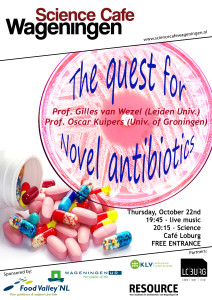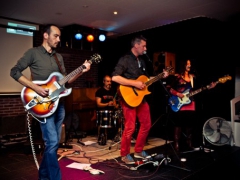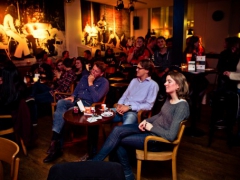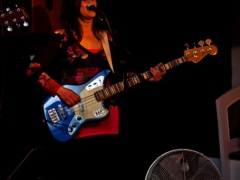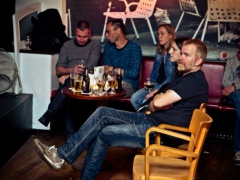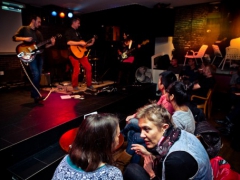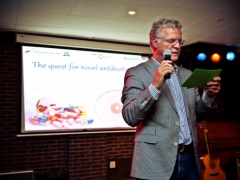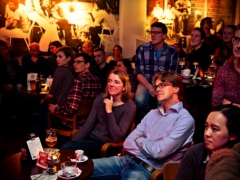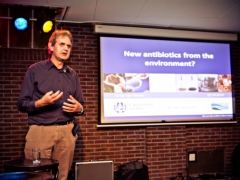October 22nd
Summary
Like the previous time, people came in numbers to the latest session of Science Café. In this session, prof. Gilles van Wezel from Leiden University and prof. Oscar Kuipers from the University of Groningen took us along on their quest for novel antibiotics. Each with his own approach, they try to discover new antibiotics that can help in fighting those disease causing micro-organisms that have developed resistance to the antibiotics already available to us.
First prof. van Wezel posed the question if we can get these new antibiotics from the environment. Although we will probably not see disease outbreaks with the impact of the black plague again, we definitely did not conquer microbial infections. Since the discovery of the first antibiotic, the discovery of new antibiotics in nature peaked but has recently come to a near halt. The chances of finding a new antibiotic in the environment with traditional methods are nearly zero and a new approach is required. It appears that micro-organisms (such as actinomycetes) that can also produce traditional antibiotics are capable of producing many more similar components, potential new antibiotics. The capability of these organisms to produce such components can be found in their genes, through genome sequencing. These genes can be triggered using special molecules or specific growth conditions for the producing micro-organisms. With this new approach, a completely new antibiotic component has already been found.
Rather than trying to find a new antibiotic in the environment, the research of prof. Kuipers is focused on designing and producing novel antimicrobial components using synthetic biology. By recombining the building blocks of known antibiotics of a very effective type (called lantibiotics), many new components can be engineered, which can then be screened for antimicrobial activity with high throughput screening techniques. With this approach, researchers have produced over 6000 new components, of which 49 seem to be effective antimicrobial components, and of those 10 even have a higher antimicrobial activity than nisin, the natural lantibiotic used as a reference. The source of novel antibiotics is therefore not just nature, we can also synthesize new components or use combinatorial chemistry. Nature provides us with an enormous toolbox to engineer novel antibiotics.
Whether the approach is to unleash what is there in nature or to make completely new components, the fruits of this research will help to find antibiotics for which resistance is not (yet) widespread. Throughout the evening everyone present was entertained with the Mark Knopfler-style music played by the band Moxa Overload. They helped to build the perfect atmosphere for the audience to continue the discussion after the event finished, enjoying a drink and some fine live music.
Hopefully you´ll be joining us next time at Science Café!
Presentations
Copyright Oscar Kuipers/Gilles van Wezel, only for private use, do not spread for public use without prior consultation of the owners.
Gallery

